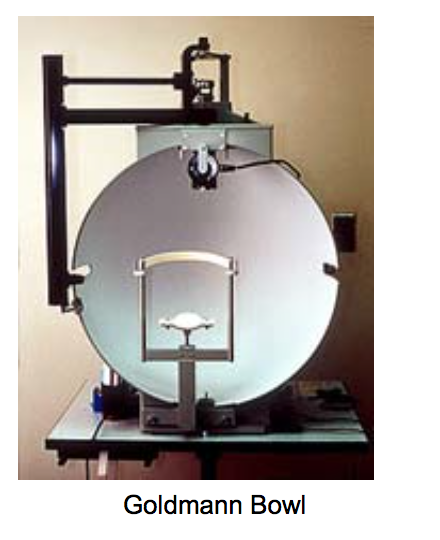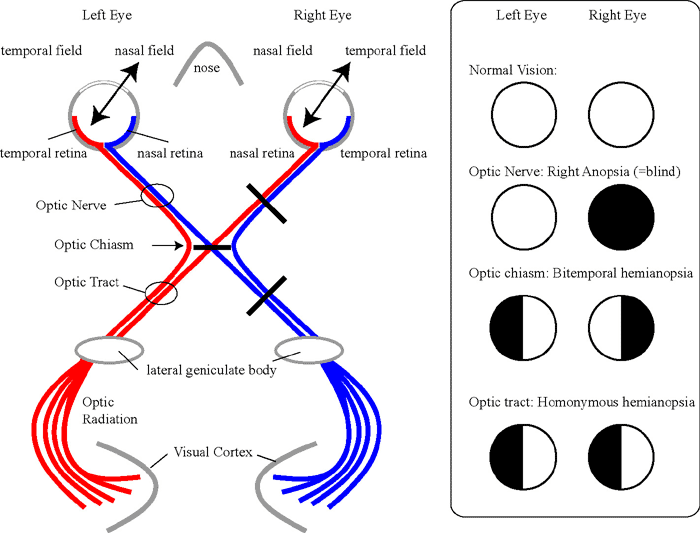B. The Visual Pathways
|
|
The visual pathways consist of four parts: a. the optic nerve b.the optic chiasm c. the optic tract d. the optic radiation |
a. The optic Nerve: runs from the retina to the optic chiasm. It consists of nerve axons from both the temporal and the nasal retina. |
b. The optic Chiasm: In this chiasm (=crossing), the axons from the nasal retina from both eyes cross to the other side whereas the axons from the temporal retina's do not cross (cave the pituitary gland). |
|
c. The optic Tract: Therefore, the optic tract on the right side (blue) contains the axons from the right temporal retina and the nasal left retina. The left optical tract (red) contains the other axons. |
d. The optic Radiation: The axons end in the lateral geniculate body into a new series of axons that radiate towards the visual cortex. |
 |
|
